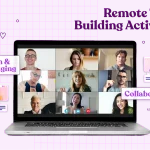
You know that sinking feeling? The one you get when a company launches a “revolutionary” new feature that absolutely nobody asked for. It’s like receiving a beautifully wrapped gift… that contains a left-handed corkscrew when you don’t even drink wine.
That disconnect is precisely why community-driven product development methodologies are having such a moment. It’s a shift from building in an ivory tower to co-creating in the town square. It’s the difference between guessing what your users need and having them tell you, show you, and even help you build it.
What is Community-Driven Development, Really?
At its heart, community-driven product development is a philosophy. It’s a framework for weaving your users’ collective intelligence directly into your product’s DNA. Instead of treating the launch as the finish line, it’s just the start of a continuous, collaborative conversation.
Think of it like this: traditional development is a monologue. The company speaks by releasing a product. Community-driven development is a vibrant, sometimes messy, but always insightful dialogue. And in that dialogue, you find the real gems.
The Core Methodologies in the Wild
So, how does this actually work? It’s not just one thing. It’s a toolkit. Companies mix and match these approaches to find their unique rhythm.
The Open Beta & Early Access Playground
This is perhaps the most common gateway. You release an unfinished product to a dedicated group. These early adopters are your scouts. They venture into the buggy wilderness and report back with invaluable data. It’s a stress test for your product and your team’s ability to listen.
The Feature Request Hub
A simple, yet powerful concept. You provide a structured space—like a dedicated forum or a tool like Canny—where users can submit, upvote, and discuss potential features. This is pure, unfiltered demand signaling. You’re not just seeing what one loud person wants; you’re seeing what hundreds or thousands of your most engaged users are collectively begging for.
The User Advisory Board
This is your inner circle. A curated group of passionate, knowledgeable users you bring in for deeper conversations. You run roadmap reviews by them, get their feedback on high-level strategy, and treat them as true partners. Their insight is often qualitatively richer than any broad survey.
Co-creation and Crowdsourcing
This is the deep end of the pool. Here, the community doesn’t just suggest—they build. Think of platforms like Minecraft or Roblox, where the users are the primary creators. Or open-source projects like WordPress itself, where thousands of developers contribute code, plugins, and themes. The product becomes a living ecosystem, shaped by its inhabitants.
Why Bother? The Tangible Payoff
Sure, it sounds nice, but does it actually move the needle? In a word, yes. The benefits are profound and go far beyond warm, fuzzy feelings.
Drastically Reduced Risk. When you build based on direct, validated user input, you dramatically lower the chance of a costly flop. You’re investing in features you already know have an audience.
Unbeatable Product-Market Fit. Your product evolves to fit your market like a glove because the market is helping to stitch it together. You uncover use cases you never would have dreamed of in a conference room.
Fierce Customer Loyalty. When a user sees their idea come to life in a product update, they don’t just feel heard—they feel ownership. They become evangelists. That’s marketing you can’t buy.
A Constant Source of Innovation. Your user base is a global, 24/7 R&D department. They are on the front lines, using your product in their unique contexts. They will find opportunities and gaps you simply can’t see from the inside.
The Flip Side: It’s Not All Sunshine and Rainbows
Let’s be real. Managing a community-driven process is hard work. It comes with its own set of headaches.
The “vocal minority” problem is real. Sometimes, the loudest voices don’t represent your broader user base. You have to learn to separate the signal from the noise.
Then there’s the roadmap dilemma. If you promise to build whatever gets the most upvotes, you become a feature factory, potentially losing your strategic north star. You have to balance community requests with your own vision.
And honestly, it can be resource-intensive. It requires dedicated people—community managers, product folks—to manage the forums, synthesize feedback, and close the loop with users. It’s a commitment.
Getting it Right: A Practical Framework
Okay, you’re sold. How do you start without getting overwhelmed?
First, choose your channels wisely. Don’t try to be everywhere. Start with one platform—a dedicated Discord server, a feature voting board, a focused user group. Master it.
Second, set clear expectations. Be transparent. Tell your community, “We read everything, but we can’t build everything. Here’s how we prioritize.” This manages expectations and builds trust, even when you say no.
Third, and this is the big one, close the feedback loop. When a user’s suggestion leads to a change, shout it from the rooftops. Tag them in the release notes. Write a blog post. Show them that their voice mattered. This is the fuel that keeps the community engine running.
Finally, you must retain final ownership of the vision. The community provides the dots; your job is to connect them. Synthesize their feedback with your market data, your technical constraints, and your long-term strategy. You’re the editor, not just the stenographer.
The Future is a Co-authored Story
In a world saturated with products that shout for attention, the ones that listen are the ones that will endure. Community-driven product development isn’t a fancy trend or a checkbox on a marketing slide. It’s a fundamental rethinking of the relationship between a creator and their audience.
It’s acknowledging that the smartest person in the room isn’t a person at all—it’s the room itself. The real magic happens not when you build for your users, but when you build with them.
And that’s a product development methodology worth investing in.


